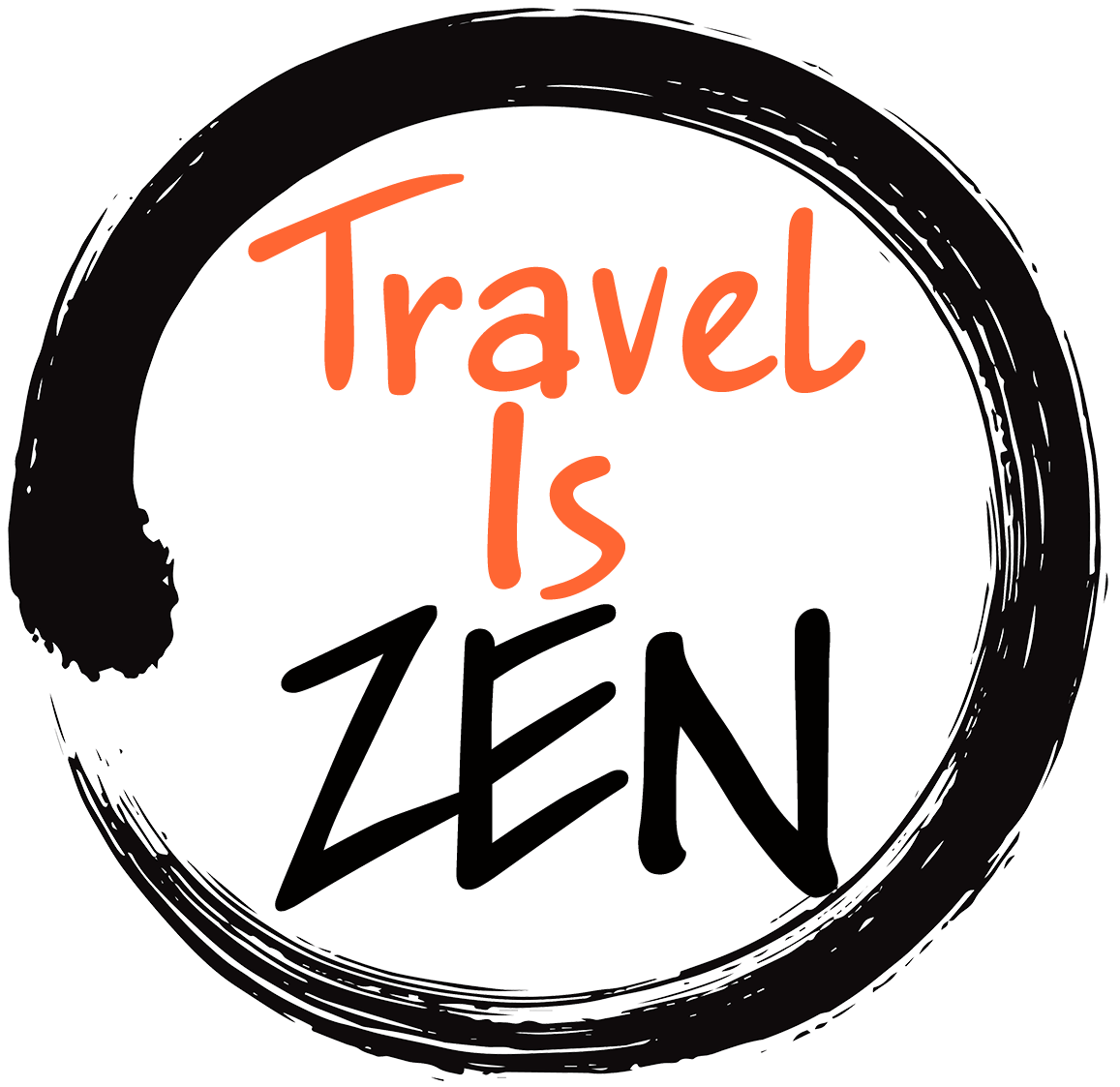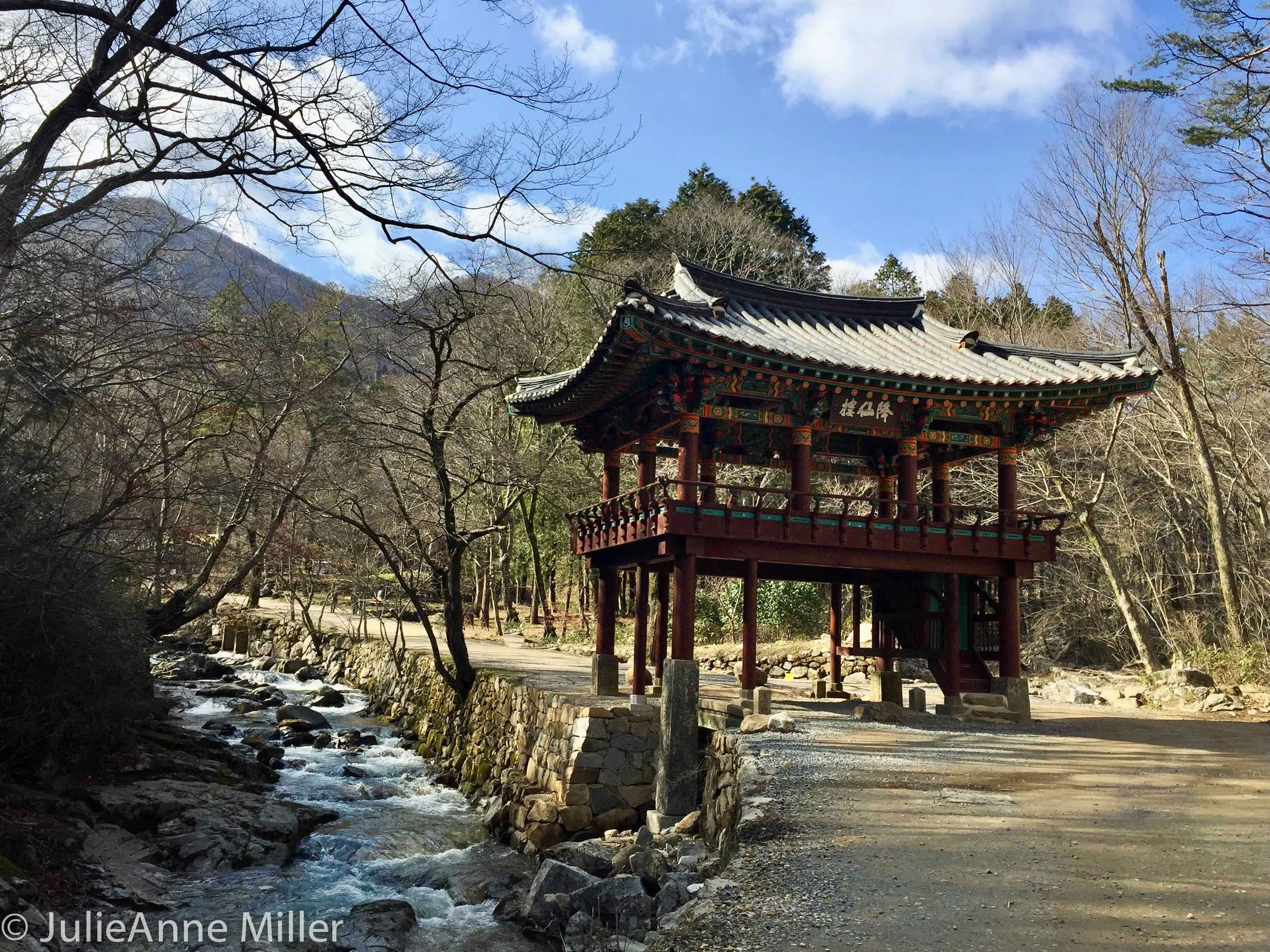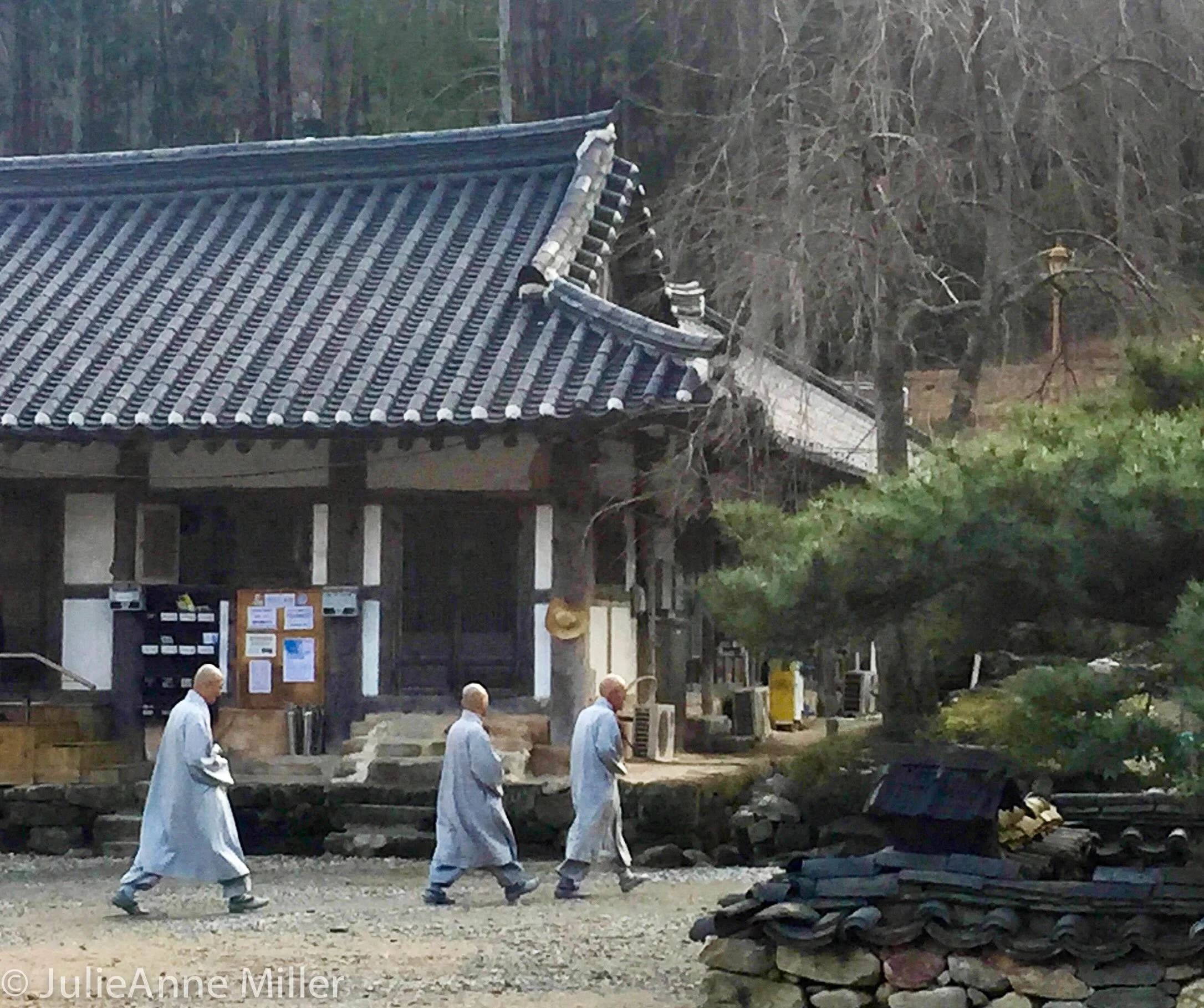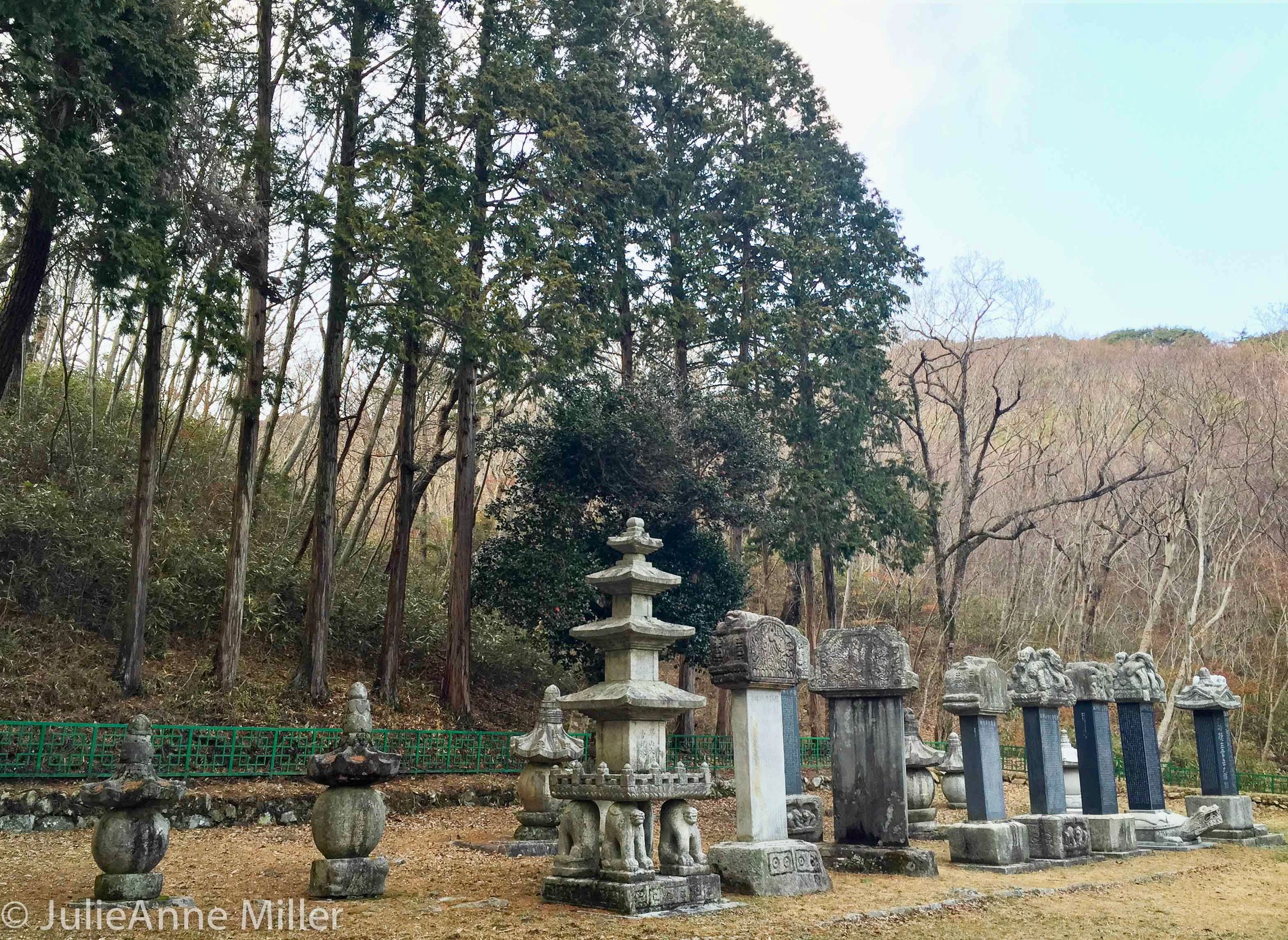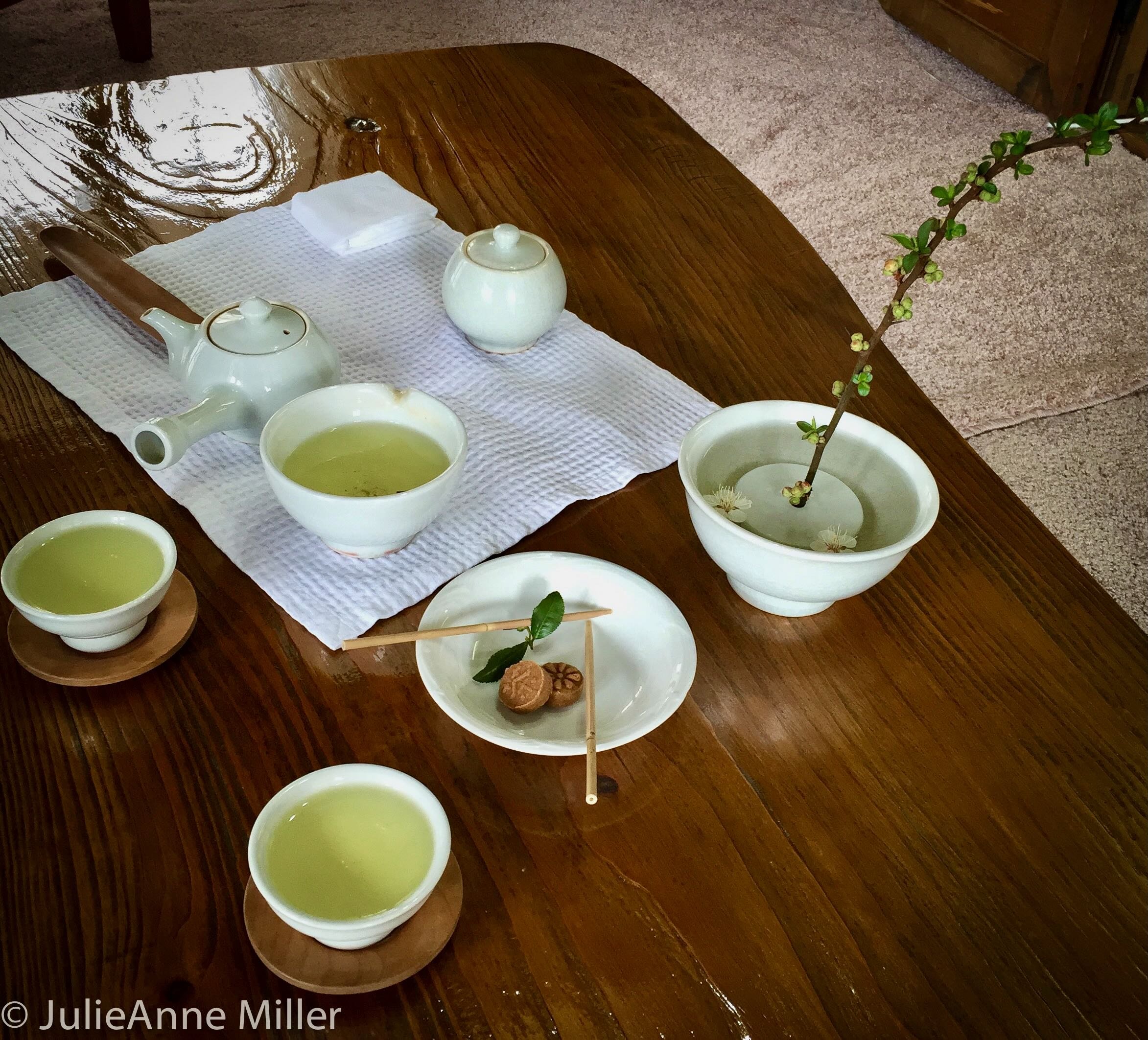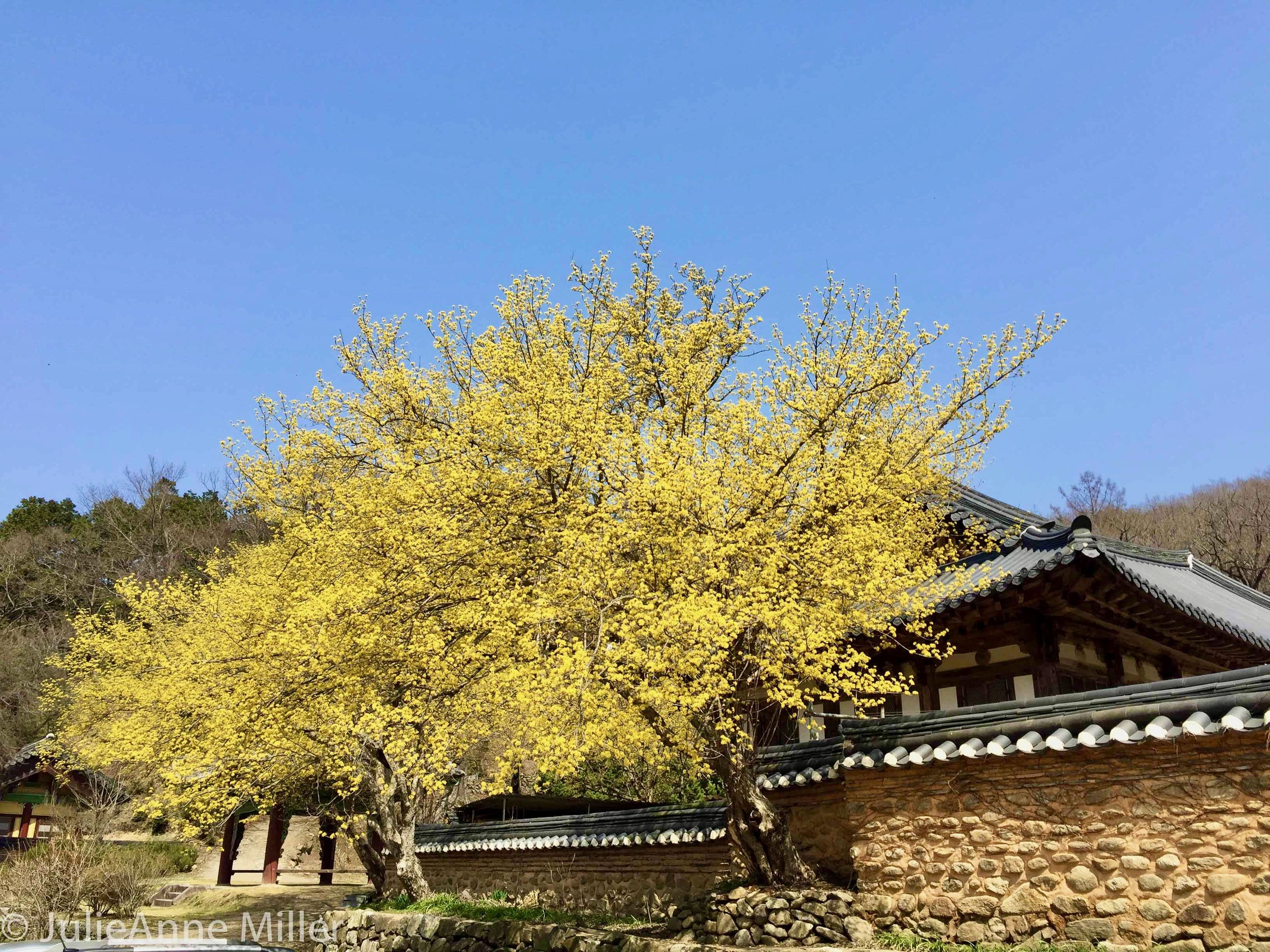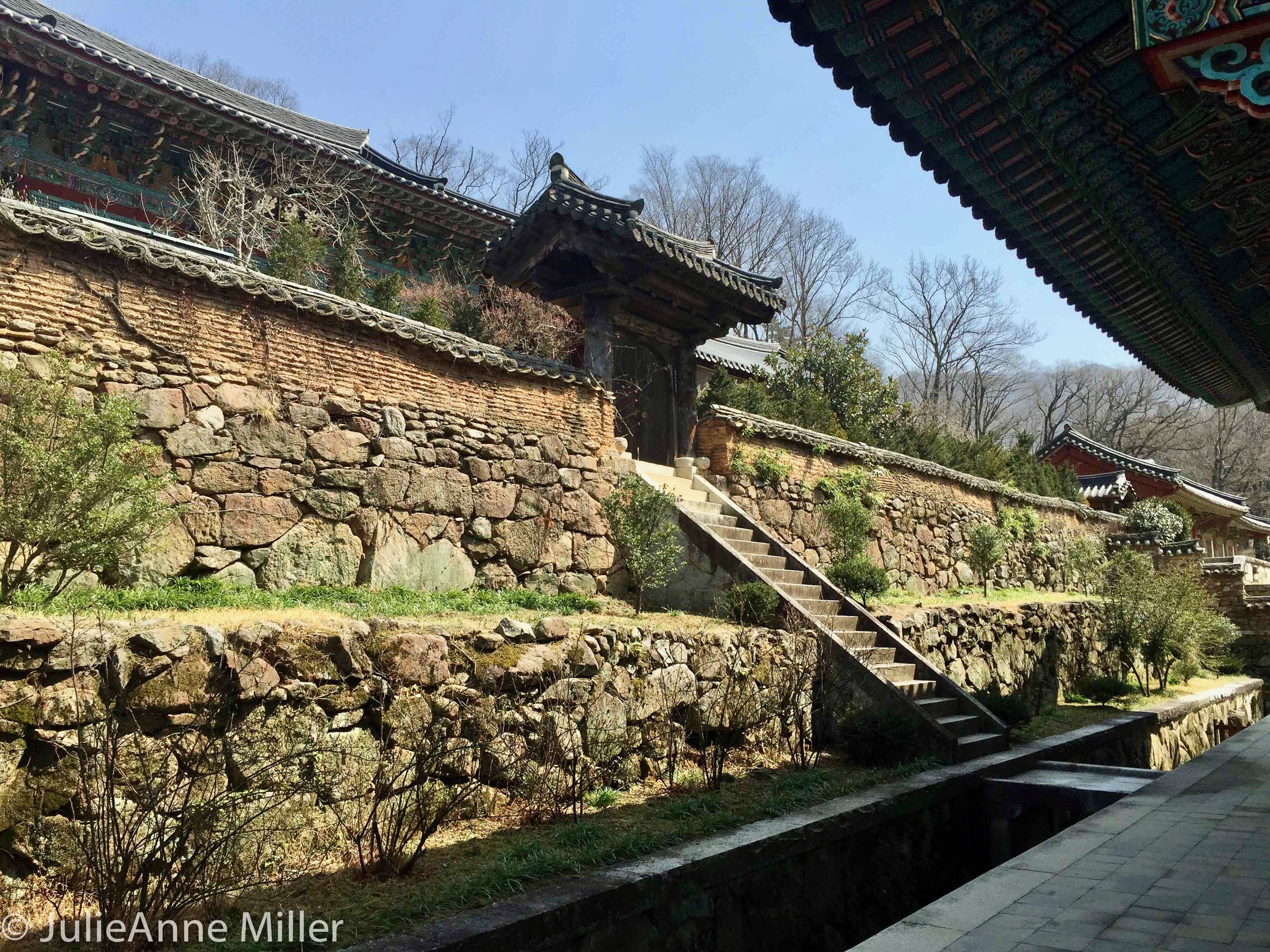Weekend Zen in Suncheon
Seoul to Suncheon vía KTX
A weekend of relaxation and contemplation is just 3 hours from Seoul on the KTX high speed train to Suncheon, in South Jeolla Province. This get-away is zero stress! Activities include deeply inhaling the sweet smell of pine, listening to the entrancing sway of bamboo, sipping green tea, and embracing silence.
Base your stay in Suncheon and use taxis or local bus services to explore two temples, a teahouse, and hiking trails — all in Jogyesan Regional Park (조계산도립공원).
Seonam Temple (서남사)
Seonam Temple is one of two rival temples that have operated in the Suncheon area for centuries. Seonam Temple belongs to the Taego Order of Buddhism, which permits monks to marry. Just 10 kilometers along a forest path is Songgwang Temple (송광사) (covered below), which represents the the Jogye Order requiring monks to be celibate.
The first striking feature of Seonam Temple is the Seungseon stone bridge (승선교), which was built in 1713. The reflection of the arch in the water forms a full circle, with Gangseonru Pavilion (강선루) framed within and a dragon head protruding from the arch apex. The trail passes the pavilion, bordered by two swift streams filling the air with the sound of rushing water. Stress melts away along the path to Samindang (삼인당) pond. With its oval shape and the round evergreen island in the middle, Samindang represents Buddhism’s continuous cycle: "Everything changes and there is no being. When people realize it, they enter nirvana."
The dirt path from the park entrance to Ilju Gate (일주문) is about one mile. The imposing figures that often stand guard when passing through temple gates are there to remind visitors to dismiss worldly desires when entering the temple. Allow this to be your signal to let go of worries and material thoughts.
If traveling in an “off” season (any month other than May or October), you may share the temple with just a handful of hikers, a few temple-stay guests, and several monks. Take your time exploring each hall. Sit at the feet of the ten judges and ponder your faults. Meditate with a spirit of gratitude in the great hall. Light an incense stick. Explore the hall of eight pictures depicting the stages of Buddha's life and absorb the tranquil sound of a monk chanting in rhythm with his wooden moktak.
In the evening, you may be treated to an unexpected concert. The monks’ aggressive, rhythmic drumming — called the "awakening call" — is hypnotic.
Taxi vs. City Bus: The taxi fare from Suncheon to the Seonam Template entrance (45 minute drive) is about $30, which I thought was reasonable until the park guide told us the Suncheon city bus was just $2 per person. We took the local bus on our return trip back to Suncheon, but it took us about 1.5 hours due to the number of stops. Your choice!
Suncheon Wild Tea House (순천 전통야생차체험관)
Beopjeong Sunim Quote: "There are four inherent attributes to tea: peace, respect, purity, and quiet. In drinking tea, these qualities should be cultivated in the drinker. Drinking tea gladdens the mind. The taste of the tea is the taste of the universe, because it is produced entirely through natural sunlight, water, wind, clouds, and air."
Jogyesan Park has miles of wild tea fields, with plants that are hundreds of years old. Monks harvest the leaves, which have a sweet, strong fragrance. Suncheon Wild Tea house (순천 전통야생차체험관) is an experiential museum located near the park entrance. Here, the morning air is cool and carries the quiet rustle of pine trees and swaying bamboo. Enjoy a few traditional folk games outside and then wander into the main courtyard.
There is a gift shop on premise and a kitchen where they dry and roast fresh leaves and make tea cookies. Inside the teahouse, monks and other visitors chat softly at traditional tea tables.
The teahouse provides a full tea ceremony (among other programs) for about $10/per person. A woman enters with a serving tray and arranges a variety of white bowls, saucers, and other items on the table. Then she explains how to make green tea. Preparing the tea is a bit of a ritual. Enjoy serving yourself or friends in a thoughtful, slow manner, nibbling tiny pressed honey cakes.
PROPER WAY TO MAKE GREEN TEA
The key to a smooth, mellow, fragrant taste is water temperature. Heat the water to just 140 degrees (rather than boiling). Scoop a generous amount of leaves into a small teapot, pour the hot water over the leaves, and then immediately pour into small heated tea cups, a little at a time in each cup to ensure the taste is evenly distributed as the flavor continues to infuse the water. Empty the contents of the tea pot and then sip the warm tea slowly. After enjoying the cup of tea, start the process all over again with a fresh batch of tea leaves. Prior to this experience, I had never been a raving fan of green tea; I thought the taste was rather bitter. After learning the proper way to make green tea, I developed a better appreciation.
Songgwang Temple (송광사) and Bulil Am (불일암)
Songgwangsa, or "Spreading Pine Temple" is the area’s other historic temple. You can hike between Seonam Temple and Songgwangsa along a 6 mile path or just take a taxi. Similar to the entrance of Seonamsa, there is a little tourist village at Songgwangsa, with shops, restaurants, and the local bus depot. Walk along the dirt road towards the temple. Rather than walking straight to the temple, though, I recommend taking a sharp left at the fork (and UP, very much UP). The wide road became a narrow path through a bamboo forest.
The path leads to Bulil Am, the hermitage of Beopjeong Sunim (법정수님 1932-2010). Beopjeong Sunim wrote dozens of books and was most famous for his teachings on non-possession. "The goal of humanity must not be to affluently possess, but to abundantly exist." (Love this!) This self-sustaining retreat on the top of a mountain has become my "mental happy place" - when I need a moment to calm a racing mind or temper a strong emotion, I picture Bulil Am. In the tourist off-season, you may have this place of solitude all to yourself, with the exception of a couple of monks. Signs remind visitors to speak quietly (if at all). * Peaceful. *
With minds emptied and clear, continue along the bamboo forest trail about another quarter mile to Songgwang Temple. Songgwangsa is considered one of three "jewels" of Korean Buddhism. Founded in 867, it remains one of the oldest active Zen teaching and Son meditation centers in Korea. The temple complex and buildings are spacious, accommodating the scores of foreigners who come here to experience and practice Zen living. Indeed, there is a large wooden bowl the size of a small boat with a sign boasting that the temple needed to carve a container this large to capture all the rice donations from visitors in its heyday. (Unmarried) monks here are of the Jogye Order, in contrast to the monks of Seonamsa's Taego Order... the bragging rice bowl hints at the competition between the two sects!
The striking aspect of this temple (in my humble opinion) is the series of panel paintings on the buildings, which are particularly well-drawn. They depict well-known and meaningful Buddhist stories, such as the story of Wonhyo and the skull and an eight-series panel on the steps to Enlightenment. These panels contrast two theories of how to attain enlightenment in Korean Buddhism. Chinul Sunim, an early founder of Songgwangsa, believed the path to enlightenment was gradual and attained through disciplined practice (depicted in the panels illustrating the steps to Enlightenment). Contrast this with the teachings of Songch'ol Sunim, who believed in an "abrupt awakening", such as that experienced by Wonhyo (depicted in “Wonhyo and the skull” panels).
Bonus Stop: Jeonju Bibimbap Dinner
When you are returning to Seoul via the KTX, do NOT miss the chance to hop off the train in Jeonju to have bibimbap (비빔밥) for dinner. Jeonju bibimbap is famous for having nine to fifteen different mountain vegetables in its mixed rice dish, with an emphasis on yin and yang principles for harmony and visual appearance. It is delicious and worth the stop, when passing through! You can catch a later train and return to Seoul in the evening, feeling physically, spiritually, and mentally full.
If you try this zen weekend experience in South Korea, tag us on social media @traveliszen. Connect with us on Instagram or Facebook and share you photos. Happy travels!
